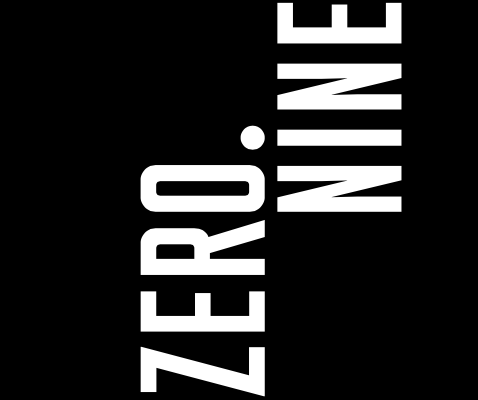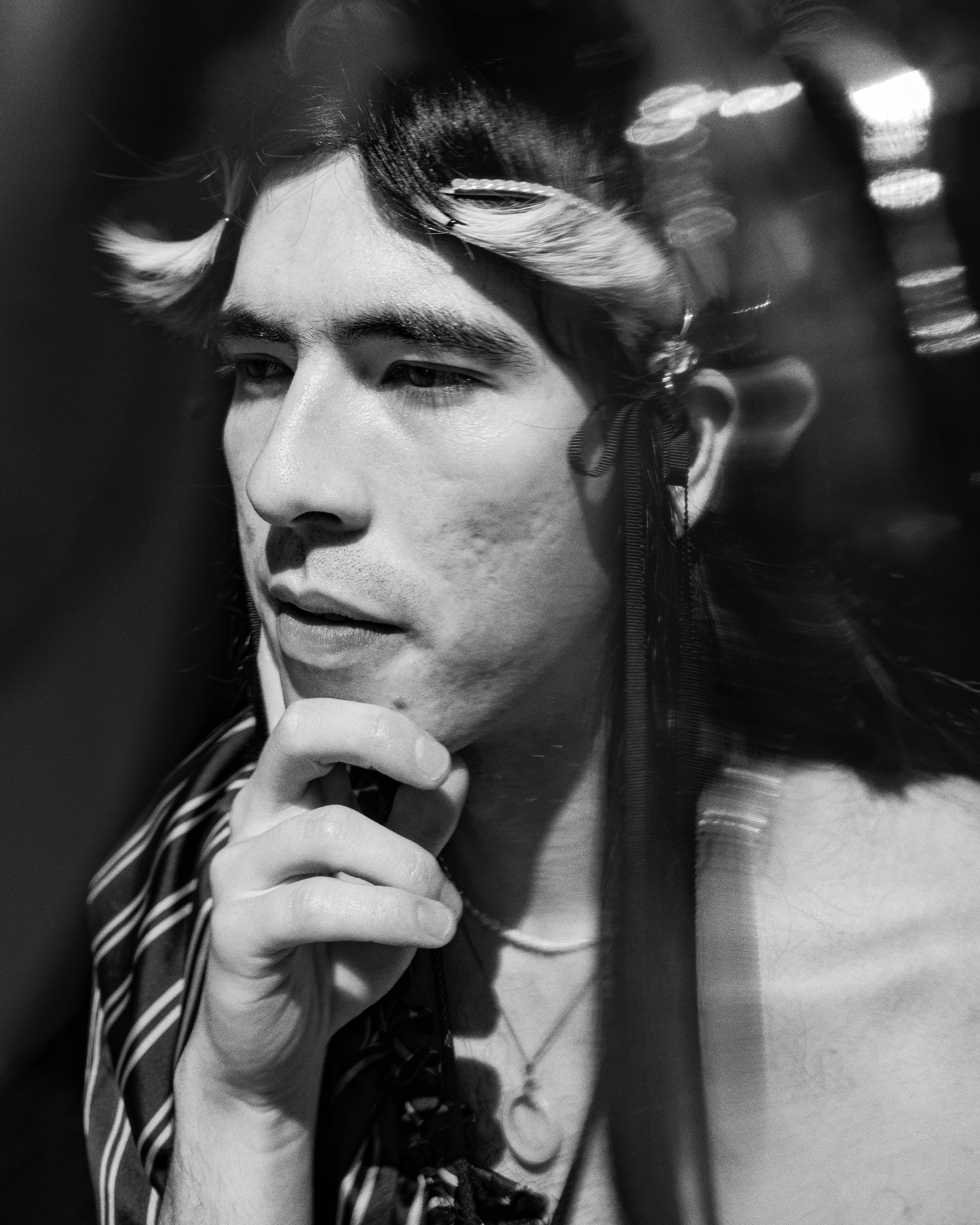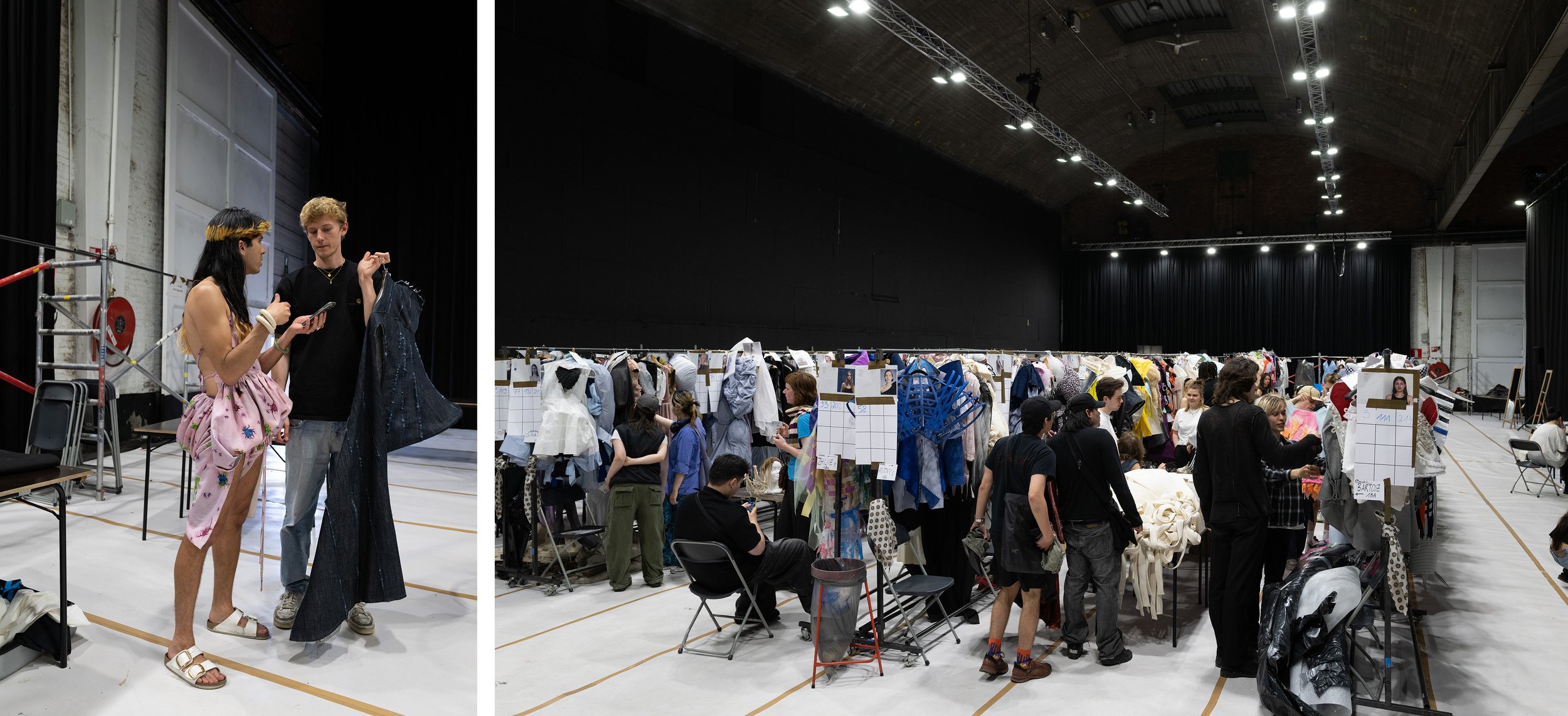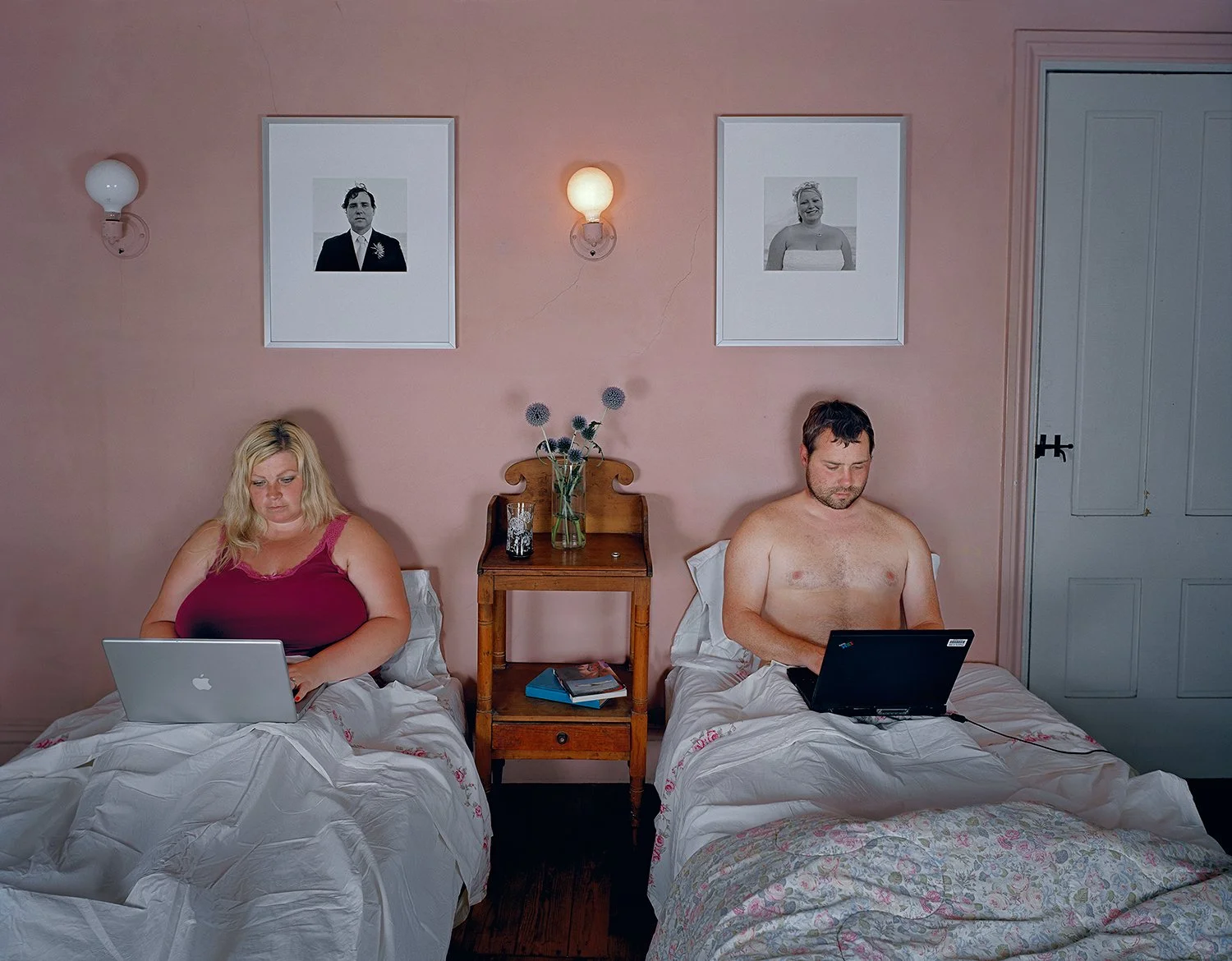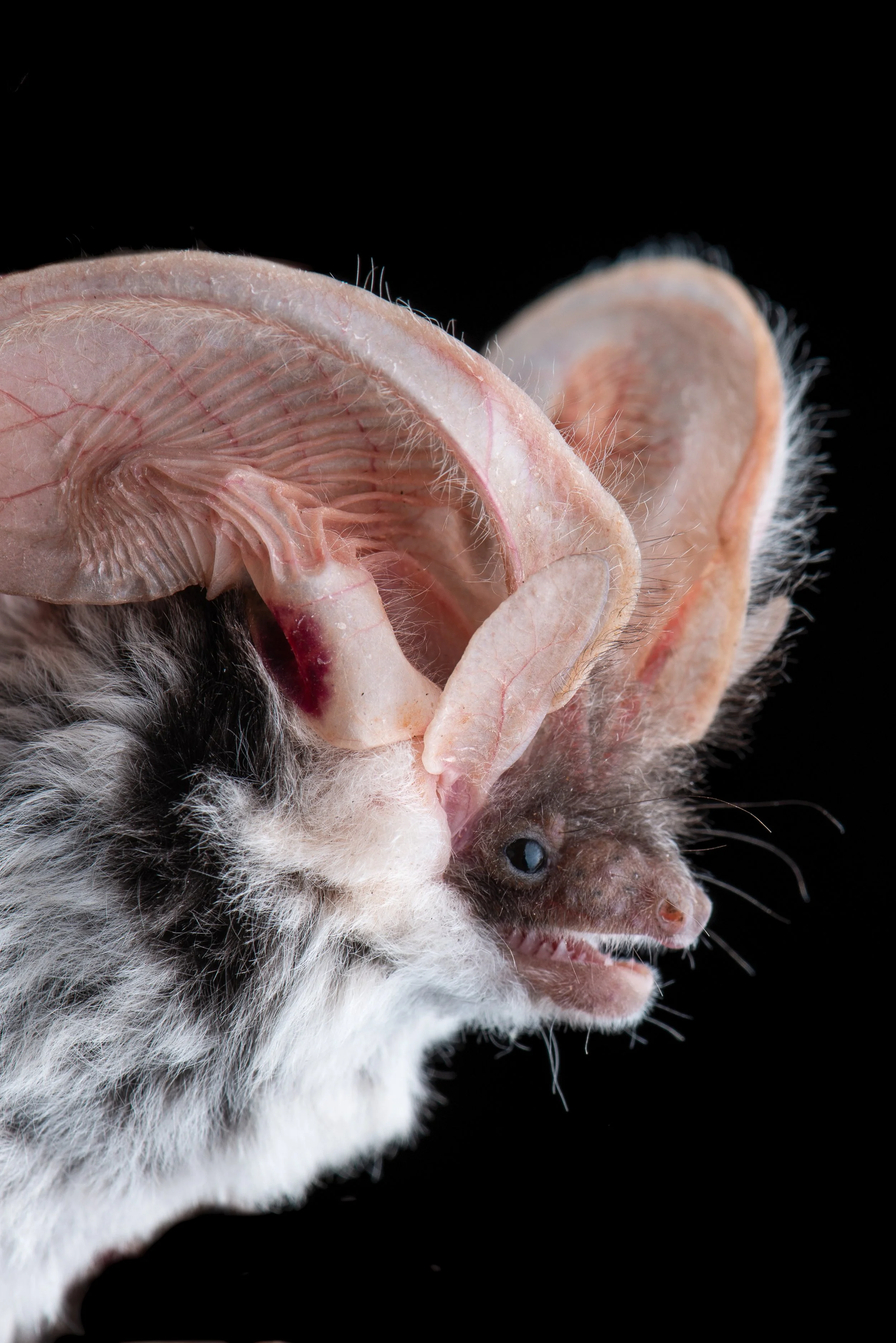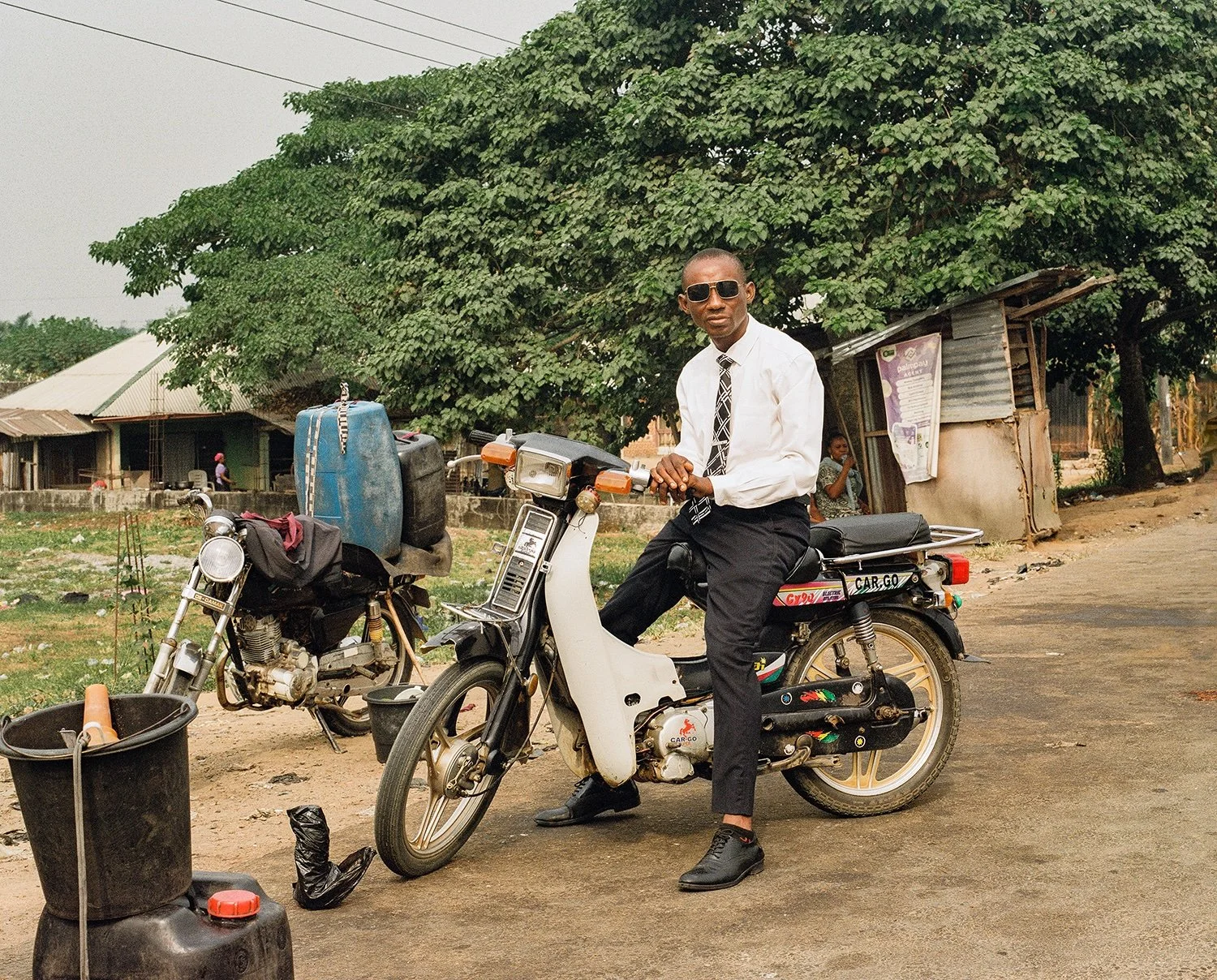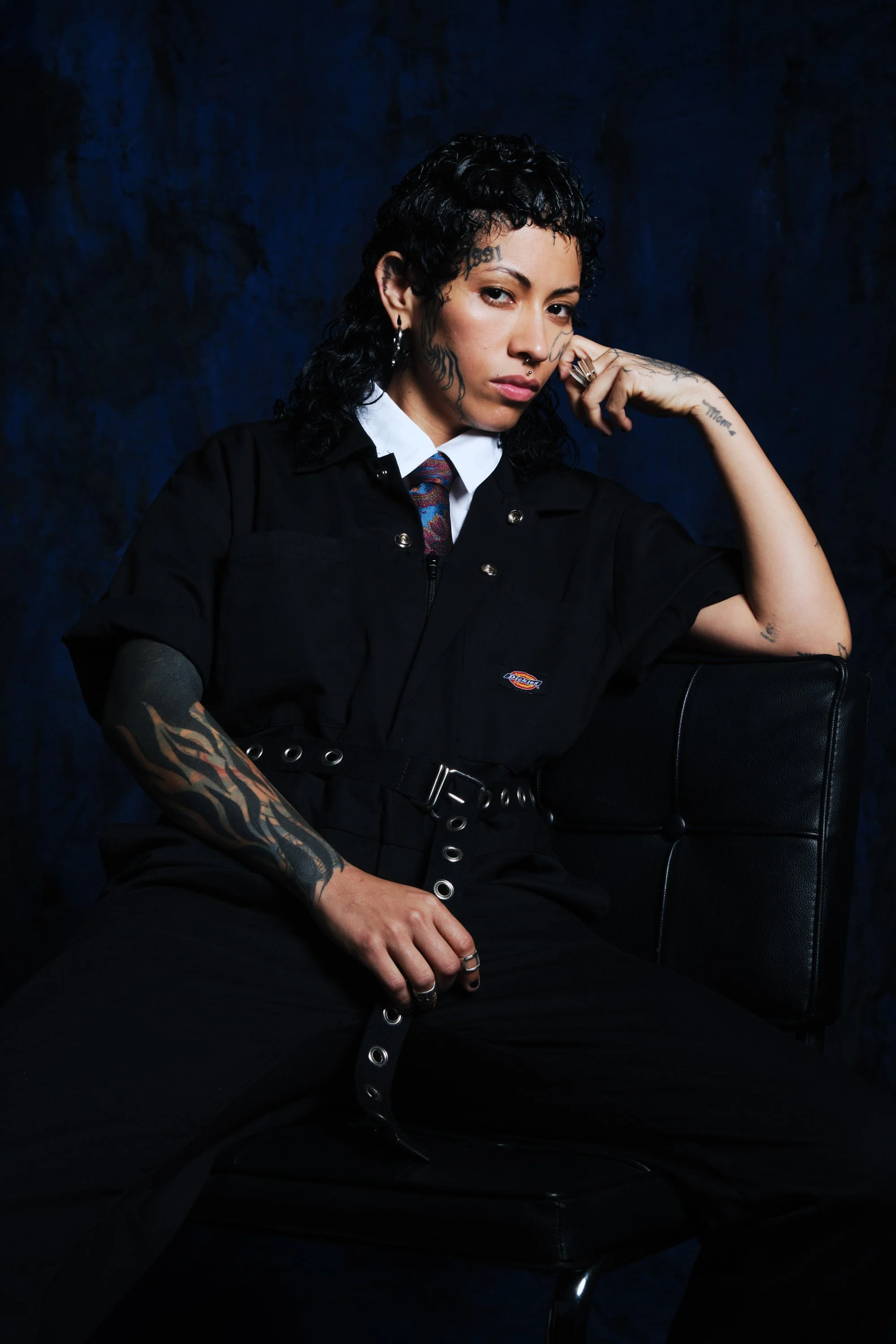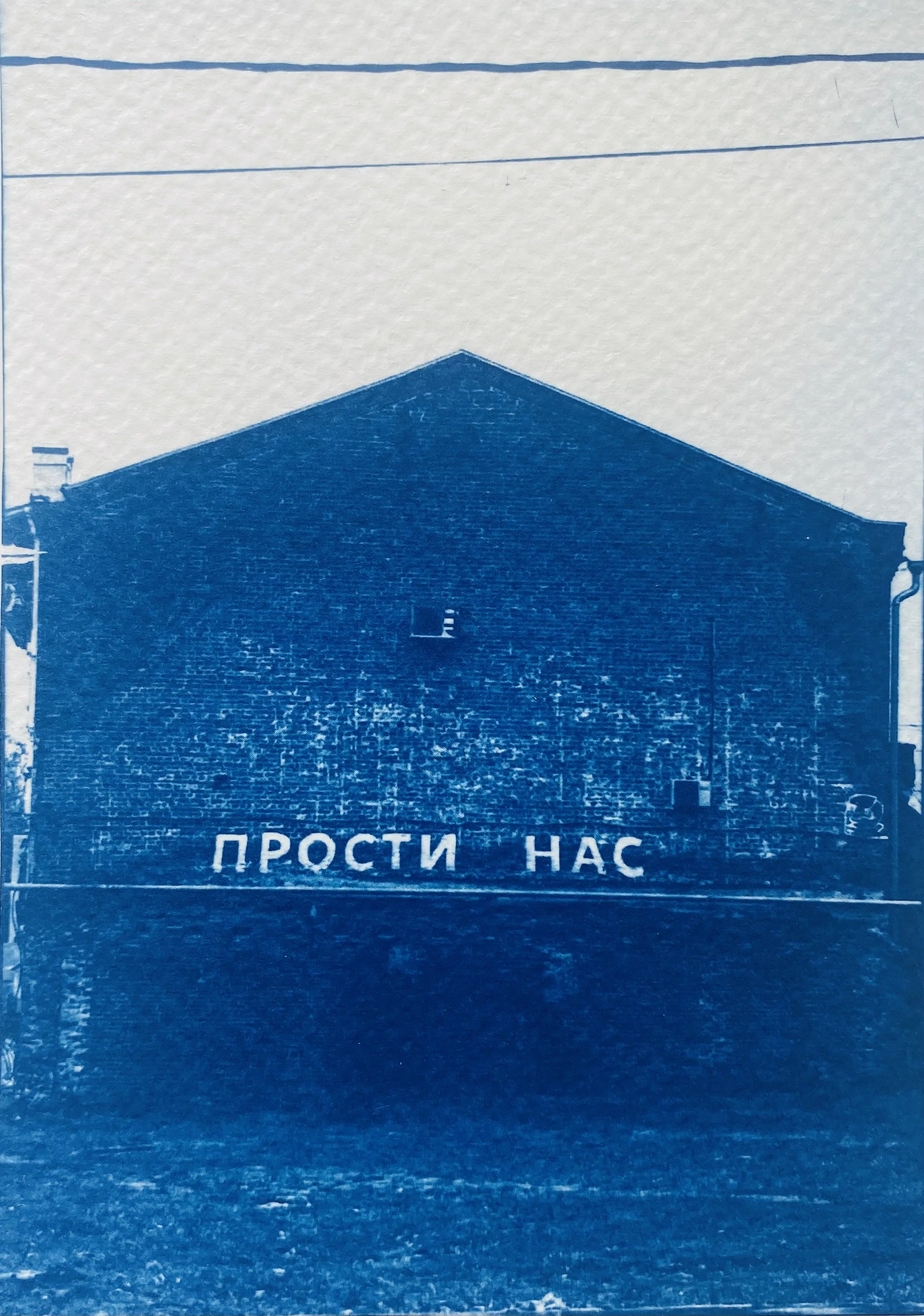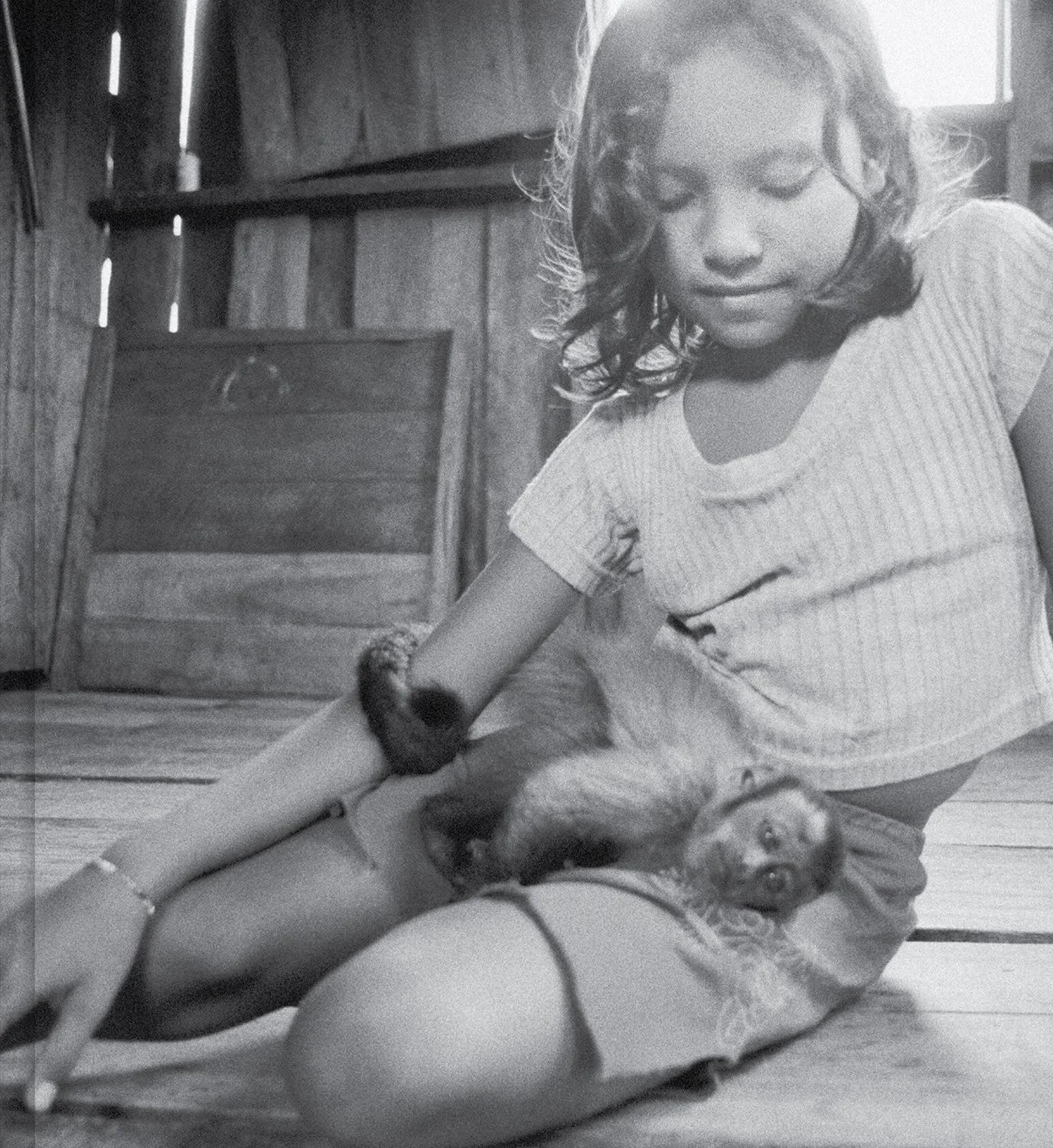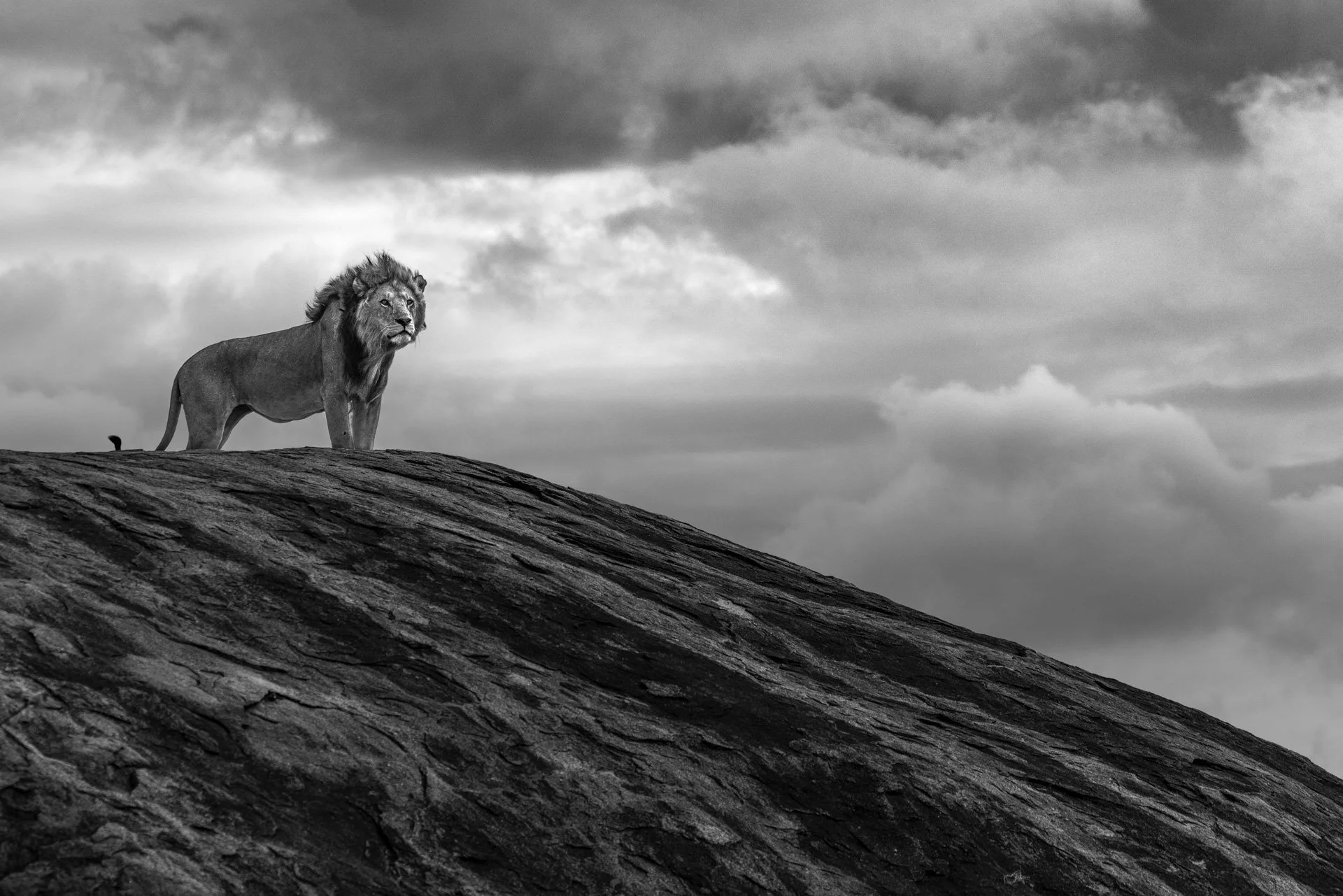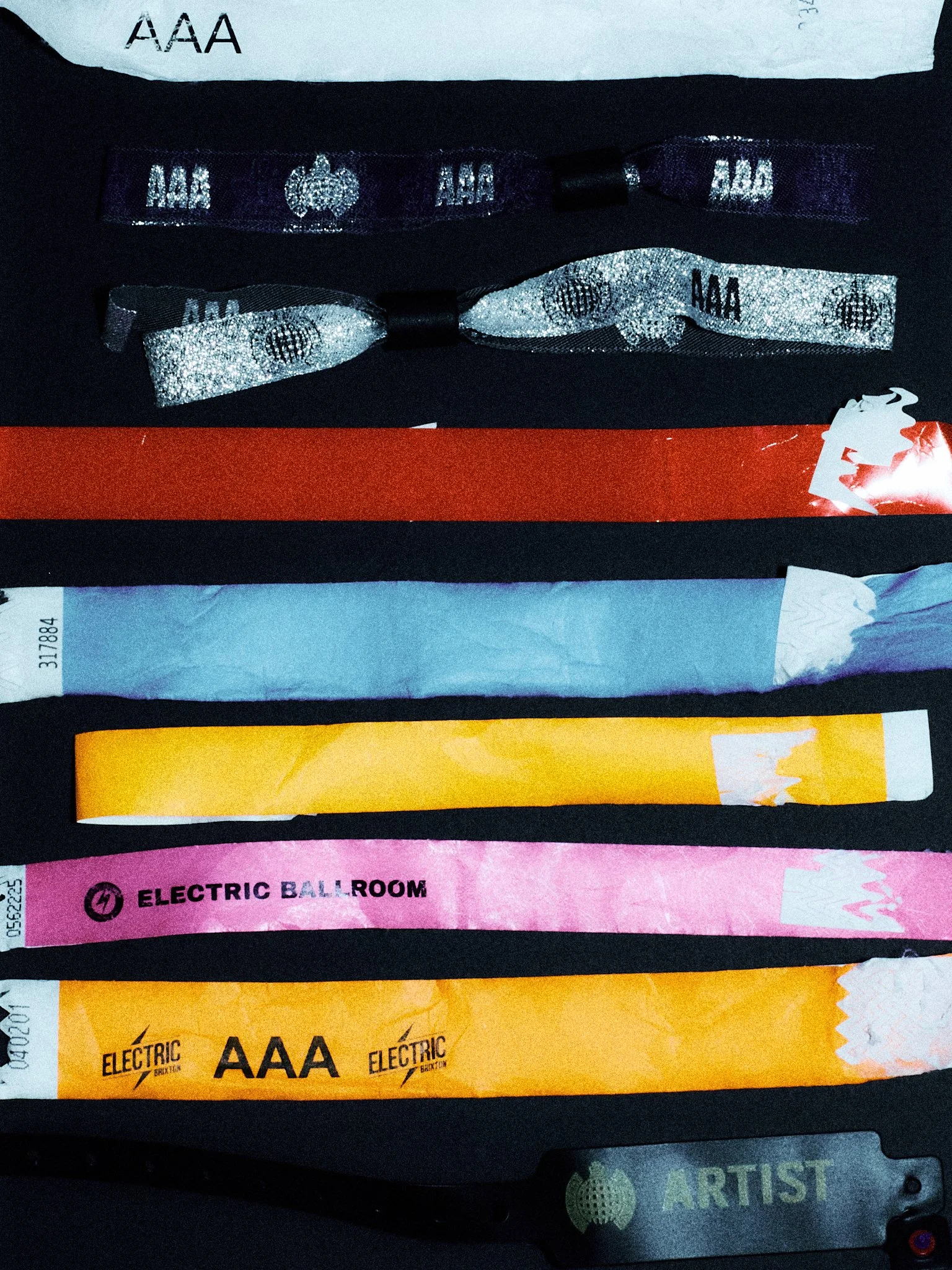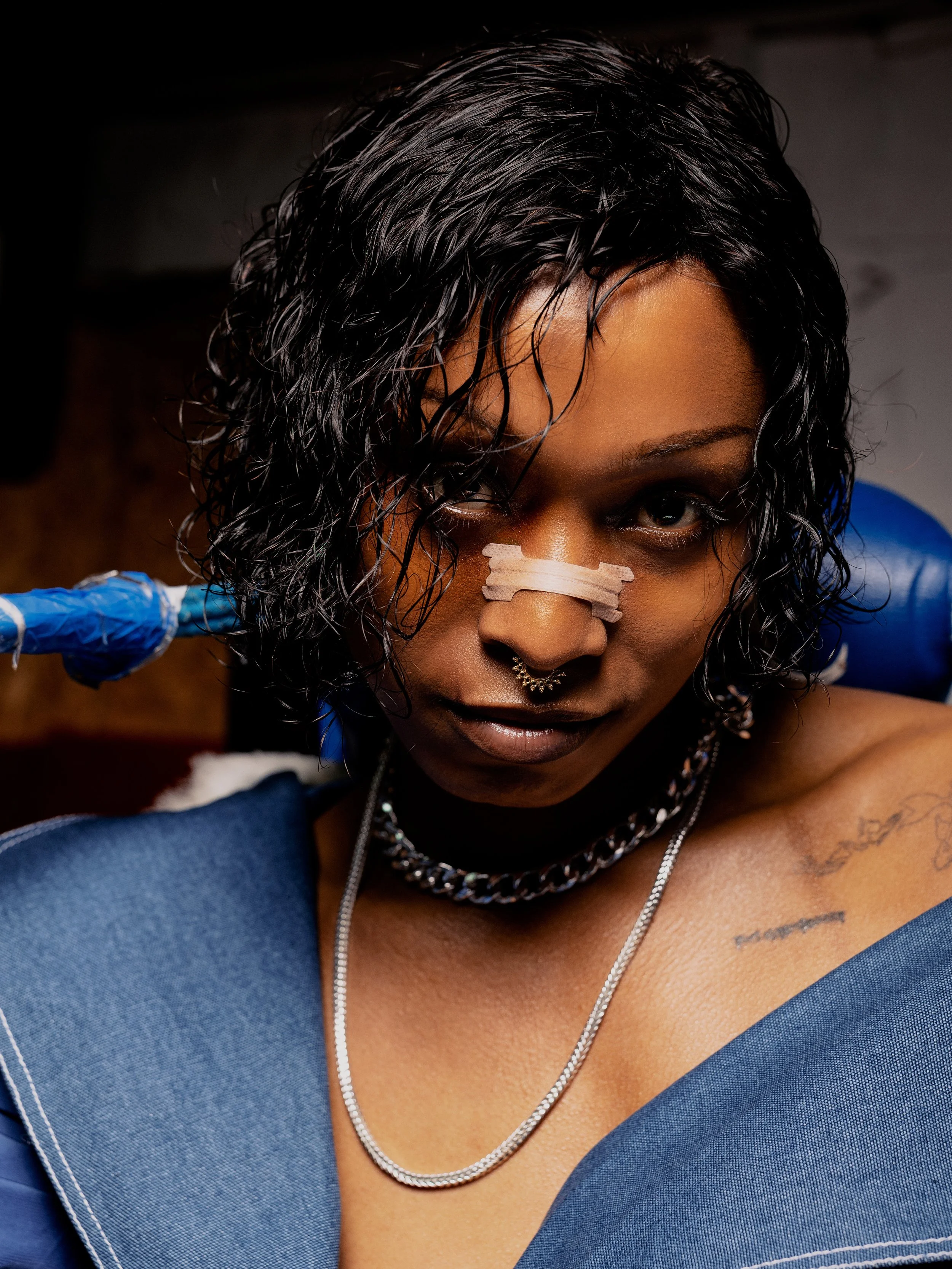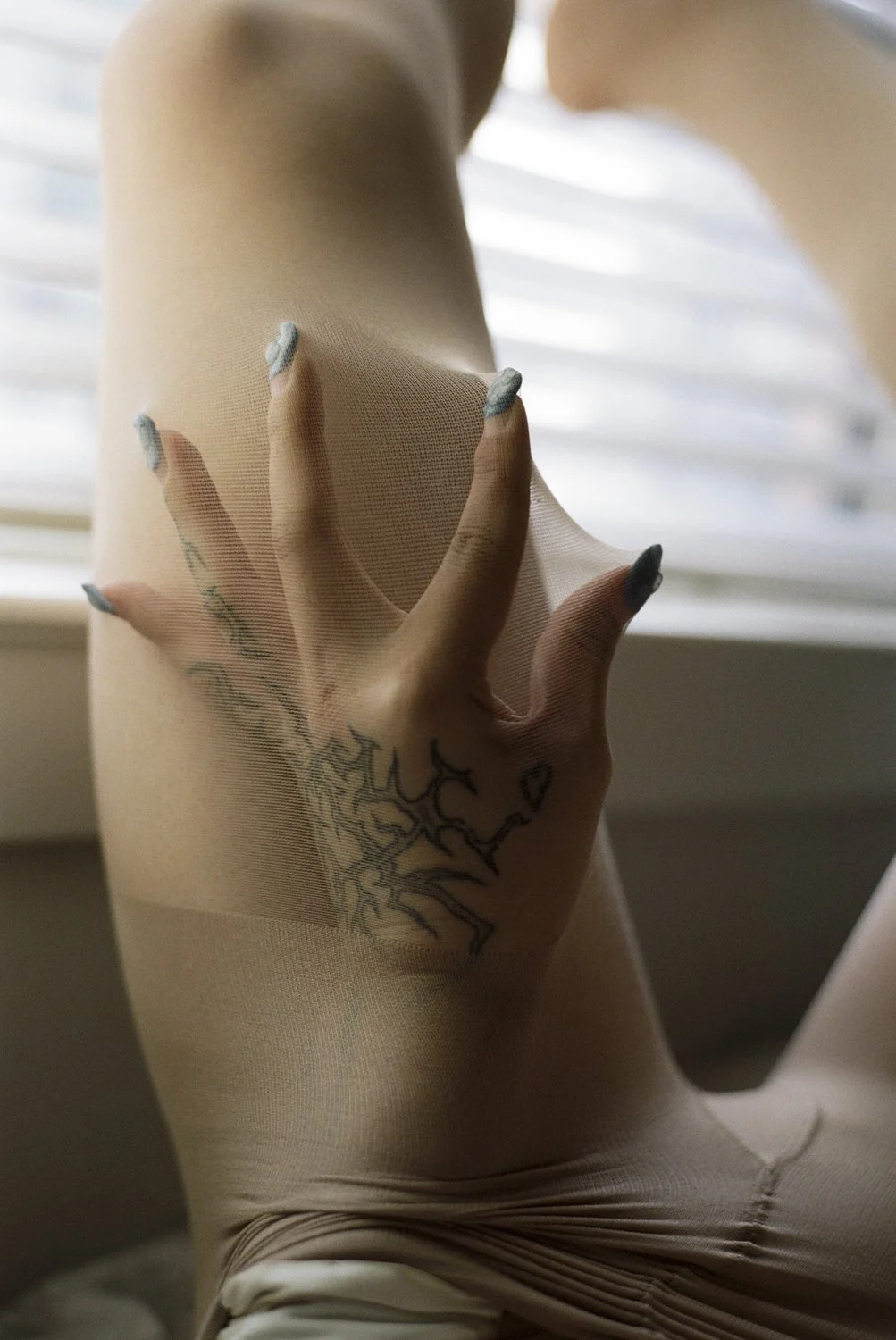In conversation with Brandon Wen
On the morning of the Royal Academy of Fine Arts Antwerp’s fashion department's annual fashion show, we met with recently-appointed director Brandon Wen to discuss The Show 2023 and delve into the academic life at this renowned fashion academy. The Show 2023 is the first under Wen’s watch, so there is a palpable air of excitement.
Interview Aki Choklat Photography Christian TrippeGood morning, how do you feel today?
I feel extremely good. Of course, I'm beyond nervous, but I think that's normal. I've always loved these kinds of moments. And this is why I am so in love with this school and fashion because we get to celebrate what we do in such an extravagant way. So in that sense I'm very happy, but it's also sort of like, "Oh, here we are! One year later, and we made it." In that sense, I'm very grateful. It's wild because in a way, you think it's a stressful thing, but in the end, everything that we planned and worked for is organised and coming together. And now it's just making sure that everything is on track and then enjoying the moment. You know, for me, this is not the moment to be overly critical. That was when we were in the planning stage and making sure everything came together. And now's the moment to just make sure that the train moving onward is smooth, and we can all have a good time.
This is certainly a moment to celebrate students’ achievements. How many students are showing?
Yes! There are about 120 students in the end that show their work. The format of the show is divided into two halves with an intermission in the middle. The first half showcases the projects of the first, second, and third-year Batchelor’s students. The first years have different projects, including skirt, dress and jacket presentations. The second-year students present a five-piece collection, and the third years present a seven- to eight-piece collection. The second half of the show is the 15 Masters students with 10 to 12 looks. Everybody shows in the end.
That's really democratic since many schools have a selection, right?
Well, there is a small selection after the first year, but in general, everybody shows.
“We've always been a school with a lot of drawing. For us the artistic process starts on paper with your hands. It doesn't start through an interface.”
Can you talk about the structure of the school a bit more? You are fundamentally in charge of all of it, right?
What's nice about the school, to be honest, is that each year is split up into teams. So, you have the design teacher, the group teacher, the drawing teacher and the digital graphics teacher. In addition, we have draping classes and nude drawing as well. The years are autonomous, with each design teacher in charge of their year and their universe, which is a really nice system. I'm in charge of the third year, but I do want to make sure that the learning outcomes are aligned, which still takes time. But yeah, it's nice when it creates little universes, which I think are very important to me and the Academy.
You are from Los Angeles. How is it to be a US fashion professional in a European academic environment?
One of my issues when I was studying in the US was that our teachers couldn't always give harsh critiques. You would get a "gold star for effort." I mean, we fail people here, the critiques are very harsh. And even if that's what I'm sort of running from, it's still a part of who I am. In a way, it's still also hard for me to give these extremely harsh critiques, even if I'm still trying to find a way. And I think for a lot of the other teachers, it's a bit more ingrained in how they operate. And for me, I'm still adjusting, you know.
“Antwerp could be a really great incubator for young creativity.”
Backstage the day before the show
There were two iconic leaders at the Academy before you, Linda Loppa and Walter Van Beirendonck, who was also your teacher. So, my question is, are you going to take the institute in a whole new direction or keep going as it is? Can you talk a little about the future plans?
It's a little more somewhere in the middle. Because I think for me, Antwerp is a very special and important place, and the focus has always been on creativity. In a way, I'm a bit of a purist. I believe in what has made this Academy and what it is now, and I also believe in what Walter did and what Linda did, as much as I know from afar. I think there are things that I'd like to change and modernise, but it's also about what is so important that we do, that makes this place what it is. I think it's hard because you want to change things. And there are some things that have to be changed, but I like the balance of tradition. For example, we've always been a school with a lot of drawing. And I think that drawing in a modern fashion world is hard to justify because a lot of people don't draw anymore. However, for us, it's a means not only of communication but also part of the artistic process that starts on paper with your hands. It doesn't start through an interface. I think this is an extremely important point to understand. This is why we are the way we are and create the way we do. Another example is taking the best elements of the shows from the past and putting them together, and then seeing what happens, but also moving forward.
A big topic is the state of fashion and how most problems are always blamed on fashion. What is your view on the state of fashion at the moment?
I think there are two parts to that. When fashion is talked about in general, fashion and retail are a bit too much blurred. But when we talk about fashion, it's something that's closer to art and artisanal things. It's hard because you have a lot of students who are highly creative, highly artistic people. They're sensitive, they make very personal things.
The question is, should they be working at a brand, which is a traditional route in fashion, or start a brand? But is it responsible to be 23 and have no money and start a brand? There needs to be another path for this kind of creativity because it's the creativity that guides everything.
“It's the creativity that guides everything.”
Brandon Wen in conversation with Aki Choklat on the top floor of the MoMu, where the studios of the fashion department are located
You are a leader in one of the most important fashion academies in the world. Do you have a system or philosophy you bring to Antwerp?
What I think is wild about Antwerp is that now that I've been here for a year, of course, I'm learning everything and growing. I don't know if there was ever such a formalised system here, and maybe there shouldn't be. Each teacher has their own way of doing things because all of us here studied here, we all learned under them. So there is this agreed sort of philosophy about being able to mix things, mix traditional, classic fashion aesthetic, craft, and then mix it with other things and have the mindset to be able to be open enough for one but also grounded for the other. For example, Dries, it's always a good mix of classical and freshness. So, that's a thread I've always seen here, the mix of the two.
I know this is a bit of a corporate kind of like an interview question, but where do you see yourself in five years?
Hopefully, for me in the next five years, it's about building the energy of the city and focusing on how we are supporting and championing the people that come from this institution. As I mentioned earlier, we will focus as a school on what we do well. Our curriculum is good but very full. There are little adjustments to be made. For example, in the third year, I want to have more discussions about design theory and engage in dialogues about design itself. Conceptually, how do we see proportion, volume and colour? Because I think that's also very important, like as an artist, that's how you look at things right now.
And I think that, because of the way the city is, it could be a really great incubator for young creativity. So, it's not exactly the school per se, but in the next few years, I would like to build up this city as a place where people stay and continue to create. Yes, students should go and work at a brand for a few years to understand how their creativity works in the context of the world. That's also why I came back after I graduated because there are so many people who are supportive and interested in what is going on in fashion here in Antwerp.
Thank you for taking the time to talk to us, and good luck with the show!
To find out more about Brandon follow him on Instagram or check out the Instagram account of the Fashion Department of the Royal Academy Antwerp
